Did anybody notice we’re in a new year yet? Just checking. I mean my insides feel like I should’ve climbed a mountain already but who are we kidding? I ain’t got no bucket list.
Speaking of buckets: Every Indian house has one. Not one. Three. Minimum. When my sister and I lived in Bombay and when I lived in Bombay by myself before that, I had my first experience of living without running water. We had water in case your brain is forming any “oh that’s so sad” ideas. Stop. We were privileged in a very different sense of the word. Water ran for 1 hour every day and at 5-5.30 in the morning. Every single bucket was filled. I rarely experienced the ritual because we/I lived with people who would do it for us. See what I meant by privileged? If we had to bathe, we would warm half a buket of water on the stove and fill up the rest with cold water. That’s all we got. Sometimes we didn’t get water at all and that’s when we were glad for such a thing as bucket back-ups.
New years always make me (more than usual) nostalgic for a life I’ve lived in the past. I was such a different person. So naive and unconcerned about worldly injustice. Sometimes I wish i could reach out and be back there for a second. I’d mingle with my friends, we’d spend way too much time at the canteen feeding our faces and the mean cat Fried Rice. It would turn to early evening and somebody would order many aloo-parathas and tea. Somebody would also complain that the food sucked and we should come to *insert North Indian state name here* and see what real food tasted like. I would go and eventually agree but right then – being among those people, worrying about nothing – it tasted just fine to me.
It tasted like home.
As for mountain climbing, I looked out of the bus window today and saw there are still plenty. I picked one last year and I’ll do it again this year. Tomorrow is going to be another mountain for Matt and I right here on the ground. Metaphorical ground. There is happy and sad news on its way. If anything, today is testament to life in the year that’s here. I’m making my peace with it. Hug the people you love extra tight and be present in every moment with them. Phone calls count. And love the love + recognise it with emphatic high-fives because it exists: my parents will be married for 30 years on this very day.
We got this, 2015. Team effort.
Always.
Happy New Year!
“If you’re lost and alone
Or you’re sinking like a stone
Carry on
May your past be the sound of your feet upon the ground and
Carry on”
– Fun.
Aloo-paratha with fried egg + roasted pomegranate seeds and a simple spinach-carrot salad
Making aloo-paratha has been on my list of things to do ever since I knew what it was. The only difference is back when I had it for the first time, I never needed to make it because I could get it for free from really (now I realise how) valuable friends. Please read the notes before going through he recipe as it is a guide on what to expect. I’m not calling this recipe authentic because I left out some spices. However, through much trial and error, I’ve learnt that food from the parts I call home feel like home because of the flavours – not sticking to every step of a recipe. You make it perfect for you and that’s what’s important.
Notes:
- There are a lot of instructions and while it may seem overwhelming, it’s not. I’ve divided it into 4 sections: a) Making the potato filling b) Making the dough c) Combining the two to make the aloo-paratha and d) Assembling the paratha and the toppings.
- Aloo-paratha is usually made from durum wheat flour (a type of whole wheat flour used in India) but I substituted it with all-purpose flour. It looked a little like parotta from Kerala and tasted like paratha from Punjab. Best of both worlds, if you ask me.
- A tawa is the best cooking tool to cook Indian breads but a frying pan or skillet will work just as well.
- You can find ghee (clarified butter) at most grocery stores in the US these days. It’s still strange for me to see it become so mainstream. As a kid, our task was to melt the ghee while my parents would make the chapatis. It’s like the finishing salt of the Indian world. If you don’t live near an Indian grocery, Whole Foods or Trader Joe’s are sure to have a bottle lying around. I haven’t checked but I have a good feeling about these things.
- I wanted to use anardana (dried pomegranate seeds) in the bread but seeing as I didn’t have any in the kitchen, I made a very different, home-made version of it in the oven. The taste of the pomegranate seed was much more concentrated and while the outside had the texture of a raisin, the inside was crunchier than usual. I used this as a garnish rather than in the dough.
- The method to dry pomegranate seeds in the oven is:
– Heat the oven to 250 degrees F.
– Release the pomegranate seeds from the fruit. The best way to do this is to cut it in half across the middle (not top to bottom) and hold it over a bowl seed side down in the palm on your hand and whack the back of the fruit with a rolling pin. The seeds will fall out easily.
– Line a baking sheet with parchment paper and spread the seeds on it. Place a rack in the middle of the oven.
– Roast the seeds for close to two hours, stirring the seeds around at the 30-minute marks. This helps prevent the seeds on the edges from become too crunchy/burnt.
– Pull the baking sheet out of the oven and using a spoon (only because it will be hot) taste a few seeds from the centre. They should be of almost fruit leather consistency on the outside and when you bite down, they should *crunch*. They will have also reduced in size and turned a deeper shade of pink. If you’re convinced they’re ready, let them cool completely and set aside in a small bowl. This can be made a day ahead.
Ingredients
For the potato filling
- 2 medium yukon gold potatoes
- 1/2 tsp whole cumin seeds or 1/4 tsp ground cumin
- 1/2 tsp garam masala
- 1/4 tsp ground turmeric
- 1/4 tsp amchoor or dry mango powder
- 1/4 inch fresh ginger, finely grated
- 1 large or 2 small garlic cloves, finely grated
- 1/2 serrano pepper or 1 Thai green chili, finely chopped (remove the some of all of the seeds if you want to reduce the spiciness)
- Salt to taste
Boil the potatoes in generously salted water using your favourite method. Mine is to place the potatoes in a pot completely covered in water and going over the top of the potato by 2 inches. Bring the water to a boil on medium heat and then reduce the heat to a simmer for 15 minutes. The potatoes are ready then a butter knife can be easily inserted through the centre. Once the potatoes are ready, carefully pour out the hot water and replace it with cold water to stop cooking. Let them cool and then peel the skins off. Mash the potatoes in a medium bowl.
While the potatoes are boiling, dry roast the cumin seeds. This shouldn’t take long since the quantity is small. Add the cumin to a small pan and place on medium heat. Let it roast while constantly stirring. This prevents it from burning (as tasting terrible!) and roasted evenly. There are a lot of variables but you will know the cumin is ready once it starts to get fragrant (you might have to stick you nose close to the pan) and get slightly darker on the outside. This step is optional and purely for my flavour-playing enjoyment.
Add all the spices, including the cumin seeds (if using) to the bowl with the mashed potatoes. Grate the garlic and ginger on top. Add the chopped chili and salt to taste. Cover and set the bowl aside while you make the dough.
For the dough
- 2 cups unbleached all-purpose flour + more for dusting
- 1/2 tsp salt
- 2 tsp ghee, melted
- 1/2 cup luke warm water
Mix the flour and salt together in a large bowl using your fingers (it’s the best way). Add the melted ghee to the flour and spread it in well. Make a well in the centre of the bowl and add a little bit of water at a time, mixing in parts of the flour wall as you go. Knead the dough for 5 minutes once you’ve used up all your water. If you feel you need more water, add just a teaspoon at a time. It might sound like it’s not enough but it is ALWAYS better to have too little over too much when it comes to water and flour.
Once your dough is sufficiently kneaded, roll it into a ball and let it rest on the counter for 30 minutes.
Making the aloo-paratha
First you need to divide the dough into 7 or 8 balls, rolling them up into well-rounded circles. Place the bowl with the potato filling close by. Dust a working surface with flour (to prevent the dough from sticking) and start with the first ball of dough. Flatten it on the working surface using your fingers and then sprinkle the top lightly with some more flour.
Using a rolling pin, roll out the dough, constantly turning it around and flipping it over so you get a nice round circle to place the filling in. Roll it to about 1/4 inch in thickness.
Take a little more than a tablespoon of the potato filling and roll it into a circle on the middle of your palms. Place it right in the centre of the dough and flatten it just a little. Draw the edges of the dough to the centre to cover the potato filling. I have taken easy step-by-step photos for your ease.
Once you’ve pulled the edge of the circle to the centre, pinch it so that it seals the potato filling and flatten it carefully to seal in the contents. If you notice any openings, pinch them shut or cover with any extra pieces of dough.
Dust the work surface with flour. Roll the dough back up again, pinched side up, using as little pressure as possible on the rolling pin. Start rolling from the middle to the edges. Put most (which is still not a lot) of the pressure in the middle and move the rolling pin lightly towards the edge. If you press down too hard, the potato filling might spill out along the edges. It might do this anyway if the dough feels finicky but it’s almost nothing to worry about. It it’s too bothersome, you can seal these open spots with bits of dough.
Once you’ve rolled out all the parathas, the next step is cooking them. Heat a pan (preferably one that deals well with high heat) to medium-high heat. Coat it to the “happy medium” with ghee: This means you want to coat the surface of the pan and them have a little bit more for extra love. Once the pan is hot (this is important), place a paratha on it. It should start cooking as soon as it touches the surface. In about a minute to a minute and a half, the paratha will start to get slightly puffy and that’s your cue to flip it over. You will notice once you flip that the bottom of the paratha has a beautiful, brown colour in parts. Dab a little bit more ghee on the top and let the bottom cook for about a minute. Again, you might notice it getting puffy, which means it’s ready to get off the pan and into a plate. If you don’t notice the puffiness, just lift the paratha with a spatula and check the colour. If it is brown in parts, it’s done.
Parathas are best eaten fresh off the tawa/pan. To keep them at a warm temperature, place them one on top of another and cover tight with a clean tea towel.
If you are cooking only a few at a time, you can refrigerate them, after or before rolling them out for up to a day. If you’ve rolled them out. Dust each paratha with flour and place pieces of parchment or wax paper between them. Place them on top of each other on a plate and cover with plastic wrap.
To assemble the aloo-paratha breakfast of champions, you will need
- Baby spinach leaves
- Carrots, cut into matchsticks
- Green onions, chopped
- Avocado
- Goat cheese
- Dried/roasted pomegranate seeds (quick recipe above)
- A fried egg (one for each paratha preferably)
- Chipotle Tabasco sauce, or your favourite hot sauce
- A crack of pepper
Put the hot paratha on a plate and top with the ingredients above in and preferably in that order.
If you have any questions, leave them in the comments and I’ll do my best to answer them. Most of all, happy eating.


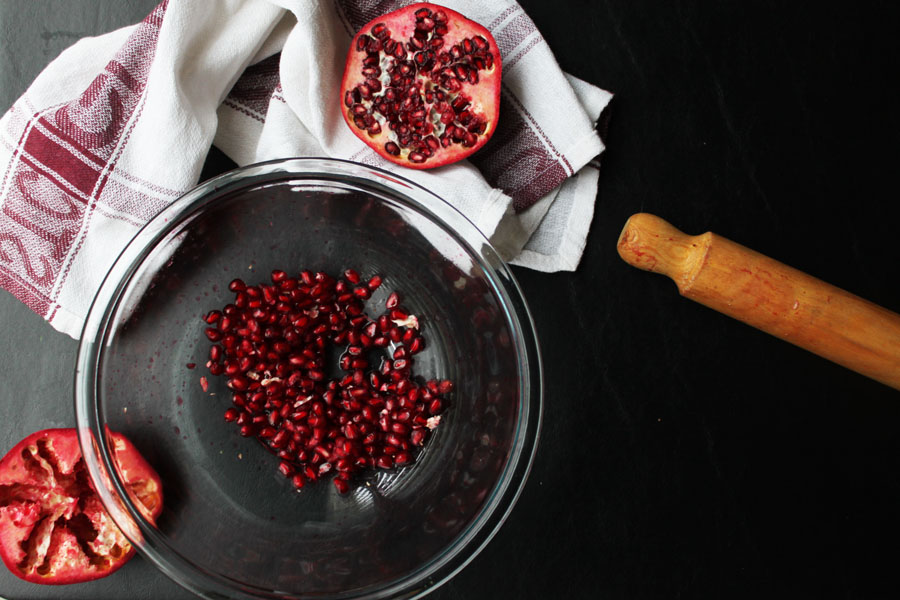

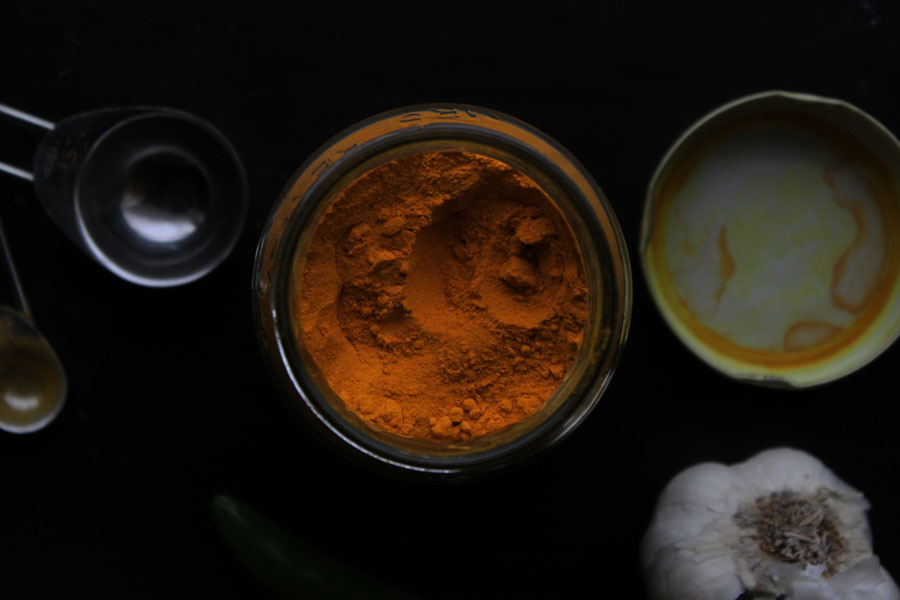
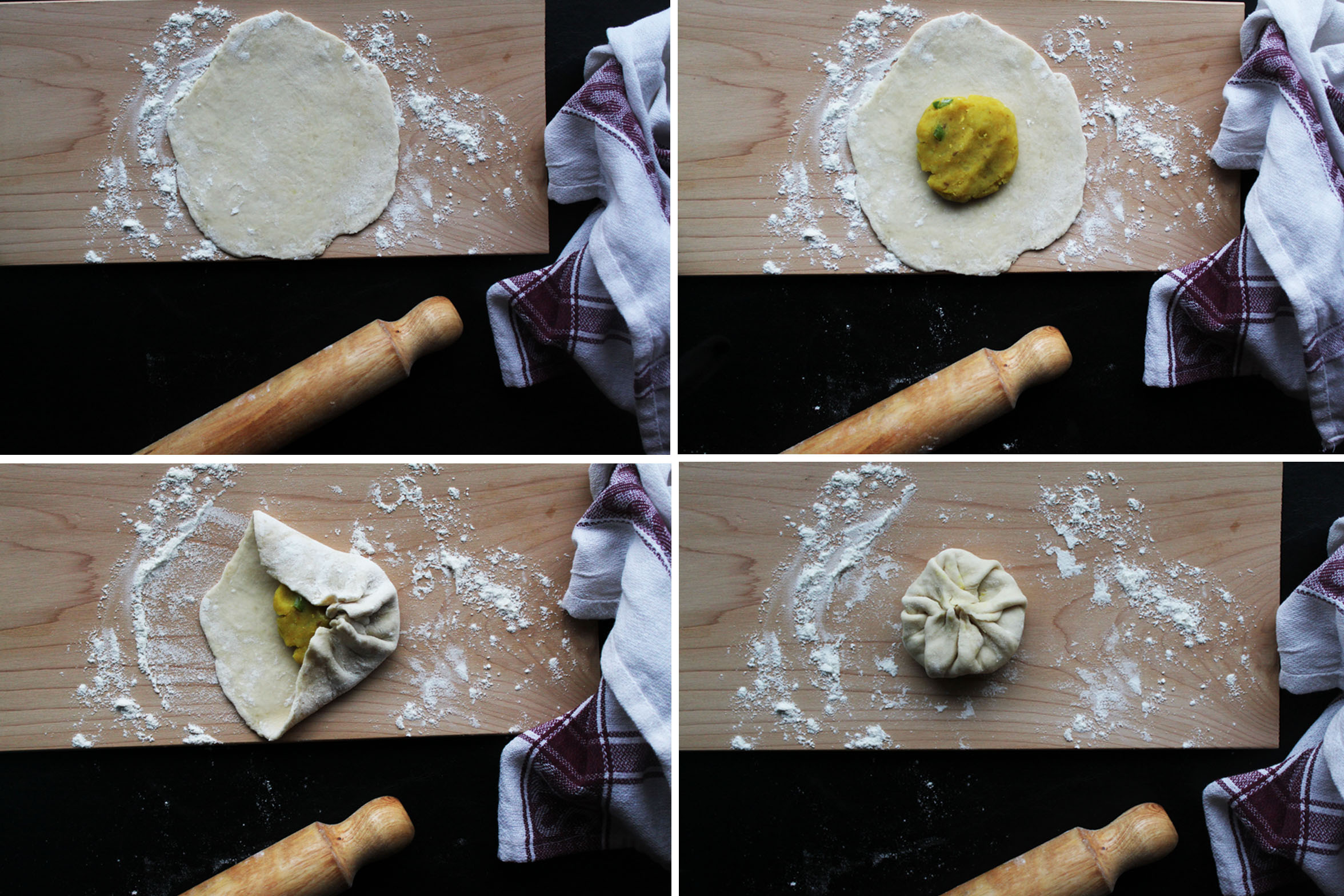
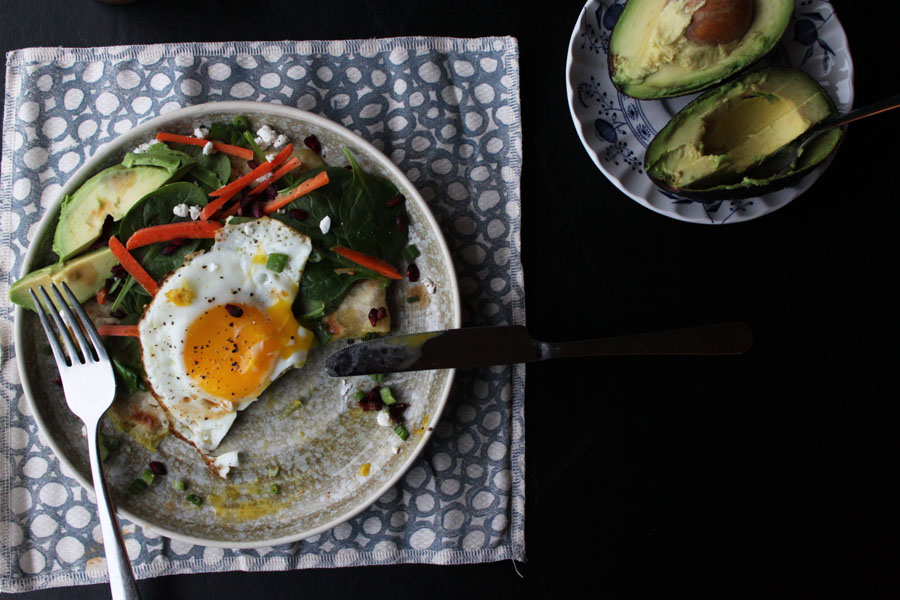

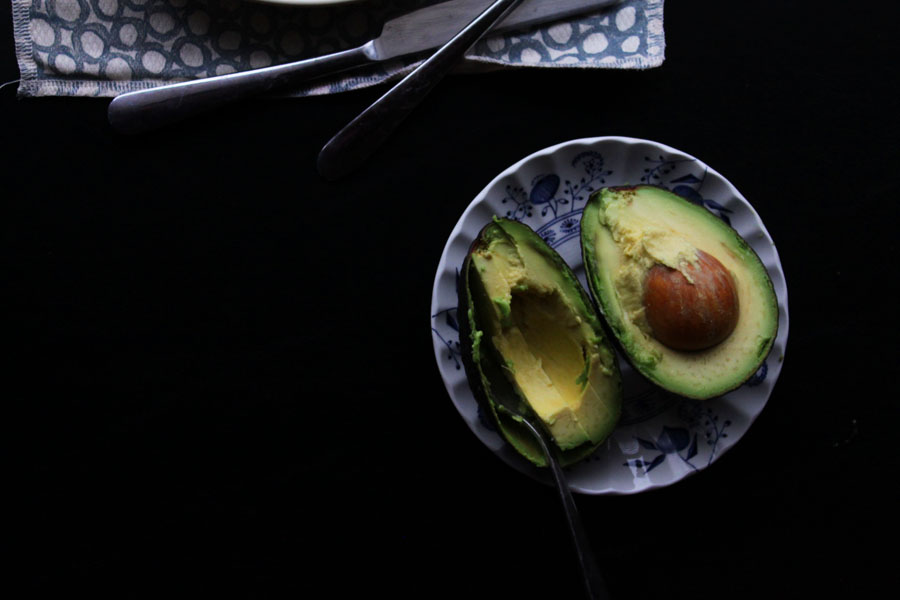
Killed me with the song recco.. Carry On is my theme for 2015
Have a good one, you 🙂 May you climb many beautiful real and metaphorical mountains successfully, and emerge to see the light on the other side. Love and hugs..
Happy New Year!
Happy New Year to you and your family too, Mary.
This is such fun! I have never had an aloo parantha in any other way than the same ol dahi + achaar route, or lately with egg bhurji (because that’s how the husband likes it) — this version might just be up his alley! Thanks for sharing and a Happy New Year to you too!
The classic way is my favourite but when you don’t have easy access to achaar and dahi, you get creative. 🙂 I’m going to make egg bhurji with paratha now that you put the idea in my head. It sounds soooo much better.
I would have never thought of it all by myself if it hadn’t been for Arjun. So I can’t take any credit at all. But do try. I think you will like it.
I love your blog. And all the thoughts running in your head. Bucket, you say is a must. True that!
You write brilliantly. And your comment about no fool-proof Indian recipes, bang on. It’s about recreating the flavours that remind you of home.
Like I said, loved your blog. 🙂